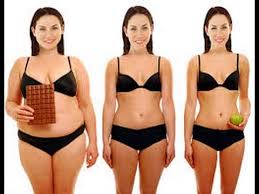How To Calculate Your Bmr
What is BMR?
When following any fat burning diet it is really necessary that you identify your BMR. BMR stands for Basal Metabolic Rate. The basal metabolic rate is the volume of energy or calories which you use up at rest. Another more common title for Basal Metabolic Rate is metabolism. Your metabolism includes functions of your body such as breathing, digesting food and circulation. Each person's metabolism is unique to their own physical composition and their own physical behavior.
Studies conducted in 1992 and 1997 indicated that your position of aerobic fitness doesn't have any interconnection to your BMR level. Anerobic exercise, such as weight lifting, leads to your body evolving more muscle mass which is fat free and expends more energy. You can build up your metabolism through weight training and building more lean body mass.
Why Is It Essential To Know Your BMR?
By being familiar with your BMR you know how many calories your body burns through when at rest. While following any fat burning diet you should not ever drop your daily calorie input too far beneath what your body needs to remain alive, otherwise the starvation reaction will kick in and you will no longer be burning fat, but muscle. Knowing your BMR allows you to tailor your daily calorie input so you have a defecit to lose fat and you will burn fat, but allowing you to avoid going too low that you end up starting the starvation reaction in your body. If you have effected your weight loss goals, being familiar with your BMR allows you to compose a nutritional scheme in line with the number of calories your body needs to remain alive and so you can look after your current weight.
The amount of calories your body burns each day is named your TDEE (Total Daily Energy Expenditure). Your TDEE is your BMR then multiplied by an activity factor which adds in an allocation for the amount of physical activity you do. TDEE is additionally known as your "maintenance level". Knowing your maintenance level will give you a opening reference point from which to plunge into your fat burning diet. Caloric expenditure can vary extensively and is much higher for athletes or exceedingly active folks
How Do You Calculate Your BMR?
There are a few formulas which can be used to calculate BMR.
I will detail 2 formulas here:
The Harris-Benedict Formula (based on total body weight)
This formula uses height, weight, age, and sex to determine basal metabolic rate (BMR). The only thing this formula does not take into account is lean body mass and so it can be inacurrate in the very muscular or the very fat.
Men: BMR = 66 + (13.7 X wt in kg) + (5 X ht in cm) - (6.8 X age in years)
Women: BMR = 655 + (9.6 X wt in kg) + (1.8 X ht in cm) - (4.7 X age in years)
Example
I am a 33 year old woman who weighs 57kg and I am 168cm tall.
BMR = 655 + (9.6 x 57) + (1.8 x 168) - (4.7 x 33) = 655 + 547.2 + 302.4 - 155.1 = 1349 calories per day
To find your TDEE, multiply your BMR by an activity factor which suits you from the table below:
Sedentary = BMR X 1.2 (little or no exercise, desk job)
Lightly active = BMR X 1.375 (light exercise/sports 1-3 days/wk)
Moderately active = BMR X 1.55 (moderate exercise/sports 3-5 days/wk)
Very active = BMR X 1.725 (hard exercise/sports 6-7 days/wk)
Extra Active = BMR X 1.9 (hard daily exercise/sports & physical job or 2X day training, i.e marathon, contest etc.)
So if from the above I am lightly active then my TDEE would be 1349 x 1.375 = 1854 calories per day
Katch-McArdle formula (BMR based on lean body weight)
If you know your body fat percentage and therefore your lean body mass, you can use the most certain BMR formula. This formula takes into account lean mass and therefore is more errorless. The Harris Benedict equation has separate formulas for men and women because men generally have a higher LBM and this is factored into the men's formula. Since the Katch-McArdle formula accounts for LBM, this single formula applies to both men and women.
BMR = 370 + (21.6 X lean mass in kg)
Example:
You weigh 57kg
Your body fat percentage is 27%
Your lean mass is 41.61kg
Your BMR = 370 + (21.6 X 41.61) = 1268 calories
To determine TDEE from BMR, you simply multiply BMR by the activity multiplier:
Example:
Your BMR is 1268 calories
Your activity level is moderately active (work out 3-4 times per week)
Your activity factor is 1.55
Your TDEE = 1.55 X 1268 = 1965 calories
Related Articles
-
How One Woman Has Maintained A 140-Pound Weight Loss For 12 Years
Jennifer Hittle has accomplished what a lot of people dream about: She
-
Trouble Cutting Down Fat? Stick To These Guidelines
TIP! It is important to exercise when trying to lose weight.
-
Tips On Doing A Healthy Weight Loss
Going for a healthy weight loss has never been an simple objective. F
-
The Loss Of Hair Secrets The Pros Don’t Want You To Know
For the most part, human beings have a history of problem solving
-
Guaranteed Weight Loss, 5 Top Tips That Actually Work!
To make weight loss truly easy, 1st you have to know its secrets! The
-
How to Lose Weight in 10 Days
10 days. If you can lose a guy in them, you can lose some weight, too
- DON'T MISS
- Lose Weight Doing The Activities You Enjoy
- Stop Suffering From The Loss Of Hair Starting Right Now
- Weight Loss Camps For Teens And Children
- 8 Things You Need To Know About Having Weight Loss Surgery
- New Chitosan facts
- I Lost 70 Pounds And I Finally Feel Alive Again
- The Truth About Belly Fat And How To Get Rid Of It
- Best Remedies For Obesity And Weight Loss Plans
- Miracle Diet For Weight Loss
- Weight Loss Plans And Creating One For Yourself




